Since we last checked in on the NBA’s longest-tenured players by team one year ago, a handful of names who were in the top 10 have changed teams either via trade or free agency.
That group includes Karl-Anthony Towns and Myles Turner, who had been with the Timberwolves and Pacers, respectively, since the 2015 draft. De’Aaron Fox is among the other longtime members of a franchise to change teams since last summer, having been dealt from the Kings to the Spurs in February after having played in Sacramento since 2017.
In addition to Minnesota, Indiana, and Sacramento, teams with a new longest-tenured player include the Bulls, Trail Blazers, Raptors, and Jazz, who have parted ways with Zach LaVine, Anfernee Simons, Chris Boucher, and Jordan Clarkson within the past year.
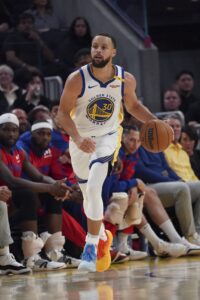 The top name on our list remains unchanged, as Stephen Curry – a member of the Warriors since 2009 – is still the player who has been with his current club for the longest period. He’s entering his 17th season with Golden State this fall.
The top name on our list remains unchanged, as Stephen Curry – a member of the Warriors since 2009 – is still the player who has been with his current club for the longest period. He’s entering his 17th season with Golden State this fall.
Because our list includes just one player per team, Draymond Green doesn’t show up in the space below, but if we were simply listing the players who have been with their current clubs the longest, he’d own the No. 2 spot behind Curry, having been with the Warriors since being drafted in 2012. Jamal Murray (a Nugget since June 2016) is another player who would place highly on that version of the list.
Finally, it’s worth noting that a player like Damian Lillard – who was with Portland from 2012-23, spent two years in Milwaukee, then rejoined the Trail Blazers this summer as a free agent – won’t show up on this list, since he has spent time with another team since first becoming a Blazer since 2012. In our view, his tenure with the Blazers reset during his time with the Bucks and restarted this offseason.
Here’s each team’s longest-tenured player, along with how he was acquired:
(Note: This is a snapshot as of September 2, 2025 and won’t be updated throughout the season. Because this list only features each team’s longest-tenured player, one player per team is listed.)
- Golden State Warriors: Stephen Curry (draft), June 2009
- Milwaukee Bucks: Giannis Antetokounmpo (draft), June 2013
- Philadelphia 76ers: Joel Embiid (draft), June 2014
- Denver Nuggets: Nikola Jokic (draft), June 2014
- Dallas Mavericks: Dwight Powell (trade), December 2014
- Phoenix Suns: Devin Booker (draft), June 2015
- Boston Celtics: Jaylen Brown (draft), June 2016
- Orlando Magic: Jonathan Isaac (draft), June 2017
- Miami Heat: Bam Adebayo (draft), June 2017
- Memphis Grizzlies: Jaren Jackson Jr. (draft), June 2018
- Atlanta Hawks: Trae Young (draft trade), June 2018
- Charlotte Hornets: Miles Bridges (draft trade), June 2018 (*)
- New York Knicks: Mitchell Robinson (draft), June 2018
- Los Angeles Lakers: LeBron James (free agent), July 2018
- Los Angeles Clippers: Ivica Zubac (trade), February 2019
- New Orleans Pelicans: Zion Williamson (draft), June 2019
- Cleveland Cavaliers: Darius Garland (draft), June 2019
- Brooklyn Nets: Nic Claxton (draft), June 2019
- Chicago Bulls: Coby White (draft), June 2019
- San Antonio Spurs: Keldon Johnson (draft), June 2019
- Minnesota Timberwolves: Naz Reid (free agent), July 2019
- Oklahoma City Thunder: Luguentz Dort (free agent), July 2019
- Indiana Pacers: T.J. McConnell (free agent), July 2019
- Detroit Pistons: Isaiah Stewart (draft trade), November 2020
- Houston Rockets: Jae’Sean Tate (free agent), November 2020
- Washington Wizards: Anthony Gill (free agent), November 2020
- Toronto Raptors: Scottie Barnes (draft), July 2021
- Sacramento Kings: Domantas Sabonis (trade), February 2022
- Portland Trail Blazers: Shaedon Sharpe (draft), June 2022
- Utah Jazz: Walker Kessler (trade), July 2022
* Note: Bridges was a free agent for the entire 2022/23 season, but the Hornets retained his RFA rights during that time and brought him back for the following season, extending his tenure with the team. If we don’t count Bridges, Charlotte’s longest-tenured player is LaMelo Ball, who was selected in the 2020 draft.
While it’s a safe bet that many players on this list – especially a few near the top – will remain the same when we check in again during the summer of 2026, it’s a lock we’ll see some changes too. Powell (Mavericks), Young (Hawks), Robinson (Knicks), White (Bulls), and – of course – James (Lakers) are among the players on this list who can reach free agency next summer.
Which players do you expect to change teams and come off this list in the next 12 months?
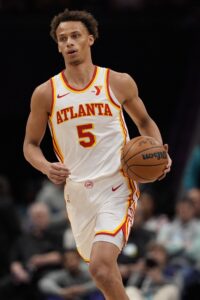 Ochai Agbaji
Ochai Agbaji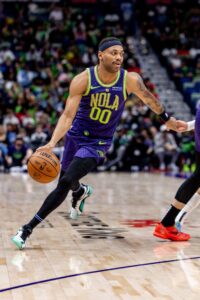
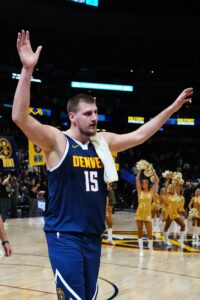 That thinking carried over for the most part this offseason to the roster, where a starting group headed up by
That thinking carried over for the most part this offseason to the roster, where a starting group headed up by  For what it’s worth, due to incentives in the Johnson and Gordon contracts, the Nuggets are relatively close to the first apron despite only being $400K or so above the luxury tax line. While Denver has gone out of its way not to hard-cap itself so far this offseason, I still think the club is probably more likely to finish the 2025/26 season below the tax line than above the first apron — the Nuggets have been a taxpayer for three straight years, so dipping below that threshold this season could be an important first step toward resetting the
For what it’s worth, due to incentives in the Johnson and Gordon contracts, the Nuggets are relatively close to the first apron despite only being $400K or so above the luxury tax line. While Denver has gone out of its way not to hard-cap itself so far this offseason, I still think the club is probably more likely to finish the 2025/26 season below the tax line than above the first apron — the Nuggets have been a taxpayer for three straight years, so dipping below that threshold this season could be an important first step toward resetting the 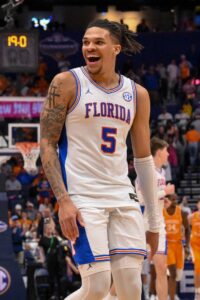 NBA insider Jake Fischer
NBA insider Jake Fischer 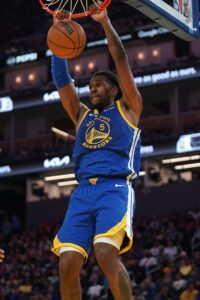
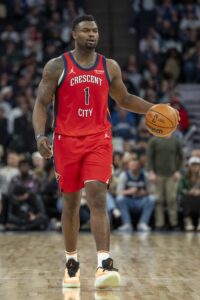 However, injuries to Williamson, Ingram, and a handful of other key Pelicans players consistently derailed the team’s forward momentum. During Griffin’s six seasons on the job, New Orleans posted a winning record just twice and compiled a total of two playoff victories in a pair of brief postseason appearances.
However, injuries to Williamson, Ingram, and a handful of other key Pelicans players consistently derailed the team’s forward momentum. During Griffin’s six seasons on the job, New Orleans posted a winning record just twice and compiled a total of two playoff victories in a pair of brief postseason appearances.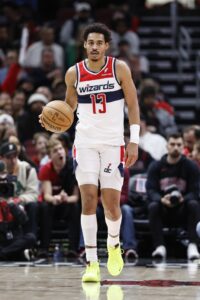 New Orleans has about $4.2MM in breathing room below the luxury tax line, which is more than enough for a 15th man on a minimum-salary contract. While it’s possible the team will leave that spot open to start the season for the sake of flexibility, it probably makes sense for depth purposes to fill it, given that Murray likely won’t be ready to play and a few other players will be managed carefully as they return from major injuries.
New Orleans has about $4.2MM in breathing room below the luxury tax line, which is more than enough for a 15th man on a minimum-salary contract. While it’s possible the team will leave that spot open to start the season for the sake of flexibility, it probably makes sense for depth purposes to fill it, given that Murray likely won’t be ready to play and a few other players will be managed carefully as they return from major injuries.